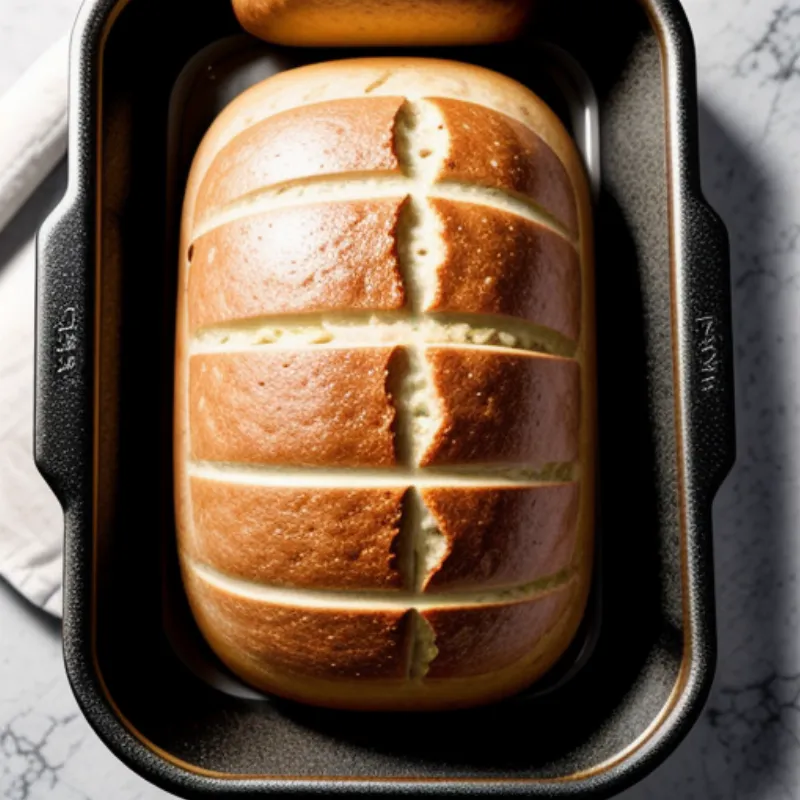Portuguese sweet bread, or Pão Doce as the locals call it, is more than just a breakfast staple. It’s a celebration of life, family, and the simple joy of biting into a warm, fluffy, and subtly sweet bread. Imagine sitting at a sun-drenched table in Lisbon, the aroma of freshly baked bread filling the air, and you’re about to enjoy a slice of this iconic treat. That’s the magic of Portuguese sweet bread.
This recipe will guide you through each step to create your very own Portuguese sweet bread at home. Trust me, it’s easier than you think, and the result is beyond rewarding. So, let’s put on our aprons and embark on this delicious journey!
Ingredients:
For the dough:
- 4 cups (500g) all-purpose flour, plus extra for dusting
- 1 teaspoon (4g) salt
- 1/2 cup (100g) granulated sugar
- 2 large eggs, at room temperature
- 1 cup (240ml) warm milk (around 100°F/38°C)
- 2 teaspoons (7g) active dry yeast
- 6 tablespoons (85g) unsalted butter, softened, plus extra for greasing
For the topping:
- 1 egg yolk, beaten with 1 tablespoon of water
- 2 tablespoons of granulated sugar
Equipment:
- Large mixing bowl
- Plastic wrap
- Kitchen towel
- 9×5 inch loaf pan
- Pastry brush
Instructions:
1. Activate the Yeast:
In the warm milk, sprinkle the yeast and a teaspoon of the sugar. Stir gently and let it sit for about 5-10 minutes, or until foamy. This means the yeast is active and ready to work its magic.
2. Combine the Dough Ingredients:
In a large mixing bowl, whisk together the flour, salt, and remaining sugar. Make a well in the center and add the yeast mixture, eggs, and softened butter.
3. Knead the Dough:
Using your hands or a stand mixer fitted with a dough hook, knead the dough for about 8-10 minutes. The dough should become smooth and elastic. If it feels too sticky, add a bit of flour, one tablespoon at a time.
4. First Rise:
Place the dough in a greased bowl, turning it to coat all sides. Cover the bowl with plastic wrap and a kitchen towel. Let it rise in a warm place for about 1-2 hours, or until doubled in size.
 Bowl of dough rising with a kitchen towel over it.
Bowl of dough rising with a kitchen towel over it.
5. Shape the Dough:
Punch down the dough gently to release the air. Shape it into a loaf and place it in a greased 9×5 inch loaf pan.
6. Second Rise:
Cover the loaf pan loosely with plastic wrap and let it rise in a warm place for another 45 minutes to an hour, or until it’s almost doubled in size.
7. Preheat and Prepare the Topping:
Preheat your oven to 350°F (175°C). Whisk together the egg yolk and water to make the egg wash.
8. Bake:
Brush the top of the loaf gently with the egg wash and sprinkle with the remaining sugar. Bake for 30-35 minutes, or until the bread is golden brown and sounds hollow when tapped on the bottom.
 Golden brown loaf of Portuguese sweet bread in a loaf pan.
Golden brown loaf of Portuguese sweet bread in a loaf pan.
9. Cool and Serve:
Let the bread cool in the pan for about 10 minutes before transferring it to a wire rack to cool completely. Slice and enjoy warm with butter, jam, or simply on its own!
Tips and Tricks:
- Milk Temperature: Ensure your milk is lukewarm, not too hot, as it could kill the yeast.
- Kneading: Kneading is crucial for developing the gluten, which gives the bread its airy texture.
- Rising Time: The rising time may vary depending on the room temperature. Be patient and allow the dough to double in size.
- Storage: Store any leftover bread in an airtight container at room temperature for up to 2 days.
FAQs:
Can I use bread flour instead of all-purpose flour?
Yes, you can use bread flour for a chewier texture.
Can I make this recipe vegan?
You can try substituting the eggs with flax eggs (1 tablespoon flaxseed meal mixed with 3 tablespoons water) and the dairy milk with plant-based milk. However, the final result might differ slightly in texture and taste.
My bread turned out a bit dense. What could be the reason?
Over-kneading or not allowing enough rising time could lead to dense bread. Ensure you knead until just smooth and elastic and allow sufficient time for the dough to double in size.
Can I freeze Portuguese sweet bread?
Yes, you can freeze the baked bread for up to 2 months. Thaw it overnight at room temperature before serving.
There you have it – your very own homemade Portuguese sweet bread! It’s perfect for breakfast, brunch, or an afternoon treat with a cup of tea or coffee. Don’t forget to share your baking experience and tag us on social media! We’d love to see your creations!
